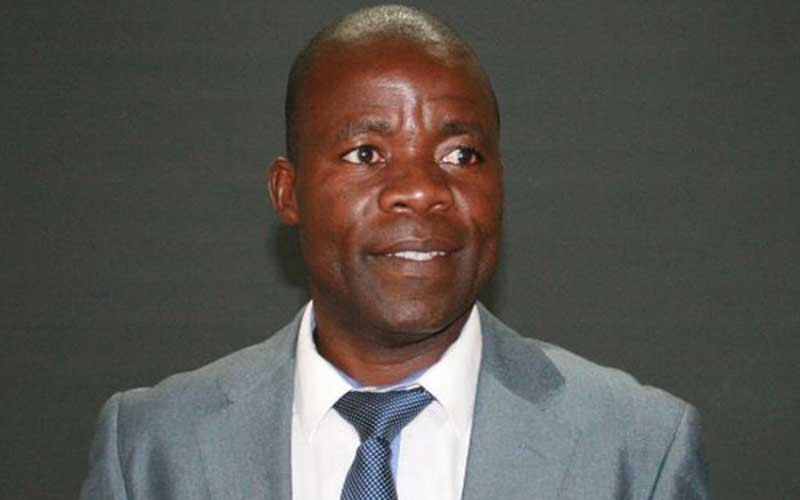
Guest Column: Scott Panashe Mamimine
THE Bill merges all marriage laws into one Act. The marriage laws in Zimbabwe are presently scattered in nine different pieces of legislation, namely the Marriage Act (Chapter 5.11), which governs civil marriages; Customary Marriages Act (Chapter 5.07), covering the customary law marriage; Married Persons Property Act, detailing the marital property regime; Matrimonial Causes Act, regulating property distribution, maintenance and other issues upon dissolution of marriage; the Customary Law and Local Courts Act, which has provisions regulating customary law applicable to marriage (for example, polygamy and dissolution of unregistered customary law marriages); the Administration of Estates Act, which governs succession upon death of spouses and modifies certain aspects of marriage laws relating to deceased estates subject to customary law; the Criminal Law (Codification and Reform) Act, which defines and imposes penalties for prohibited marriage (including bigamy) and the Domestic Violence Act, which penalises forced marriage and pledging of girls into marriage.
1.1.The consolidation of our marriage laws into one Act of Parliament makes it easy for people to find, read and understand our marriage laws than the status quo.
2. The Bill outlaws same-sex marriages in the definitional section of terms by defining the term “marriage” as meaning a marriage solemnised, registered or recognised as such in terms of this Act, being a union between persons of the opposite sex. This is well in consonant with our cultural values and public policy as the Bill re-emphasises the people-driven Constitutional position in terms of section 78, subsection 3, which clearly states that:-
“Persons of the same sex are prohibited from marrying each other”.
3. Another important aspect of the Bill is that it sets the minimum age of marriage as 18 years. Section 3, thereof, reads:
“3 Minimum age of marriage
(1)No person under the age of eighteen may contract a marriage or enter into an unregistered customary law marriage or a civil partnership.”
- Chamisa under fire over US$120K donation
- Mavhunga puts DeMbare into Chibuku quarterfinals
- Pension funds bet on Cabora Bassa oilfields
- Councils defy govt fire tender directive
Keep Reading
3.1. This is an applaudable provision which essentially outlaws child marriages in Zimbabwe, in sync with the international law framework and regional instruments on the protection of the rights of children, that is, mainly the Convention on the Right of the Child (CRC) and the African Charter on the Rights and Welfare of the Child, for which Zimbabwe is a signatory to both instruments.
3.2. The said provision comes at the backdrop of the Constitutional Court ruling in the case of Mudzuru and Anor vs the Minister of Justice, Legal and Parliamentary Affairs N.O and Ors CCZ 12-15, which declared unconstitutional section 22 (1) of the Marriage Act, which allowed girls below the age of 16 years to contract into marriage.
3.3. Section 3, subsection 3 of the Bill, further criminalises the participation of any person in child marriages it reads as follows:-
“Any person, other than the child concerned, who contravenes subsection (2), shall be guilty of an offence and liable to a fine not exceeding level ten or to imprisonment for a period not exceeding five years or to both such fine and such imprisonment.”
3.4. This means all direct players, from the tete (aunt), to munyai (middleman) or any person who aids and abets the commissioning of the offence is guilty and liable to be fined or imprisoned.
4. The bill effectively affords mutual protection to rank all marriages equally in terms of section 5 (5). Section 6 states that all parties in any marriage have equal rights and obligations during the subsistence, and at dissolution, of the marriage.
4.1. That means section 7 of the Matrimonial Causes Act, which provides the guiding principles on sharing of property on divorce which currently is only applicable to marriages under 5.11 and solemnised customary law marriages under Chapter 5:07, now extends to any type of marriage without discrimination or the burden to plead a recognisable case of action as it is with unregistered customary law unions where a litigant needs to plead tacit universal partnership on unjust enrichment.
4.2. However, section 5 (4) of the Bill also outlines that persons in a ‘registered customary law marriage in which the husband has no other existing spouse may convert their marriage to a civil marriage.
4. Parties to a registered customary law marriage in which the husband has no other existing spouse in polygamy may convert their marriage to a civil marriage and the appropriate marriage officer shall, upon being satisfied that there is no impediment to the conversion, solemnise the marriage in accordance with the general law and the civil marriage, shall supersede the previous customary law marriage in the marriage register.”
This provision may be regarded as a claw-back provision as the use of the expression ‘convert’ admits of no ambiguous interpretation that there is differential treatment given to the types of marriages as constituted in the Bill.
If there is already equality of marriage, they shouldn’t be any words or connotations suggestive of a hierarchical structure amongst the marriage types. While this may mean that the parties would want to enter into a monogamous relationship, the provision advances an impression that civil marriages are better.
5. Section 9 of the Bill enjoins chiefs to be marriage officers. It reads as follows:
“9. Chief to be marriage officer in customary law marriages for districts.
Every chief shall, by virtue of his or her office and so long as he or she holds such office, be a marriage officer in customary law marriages for the district in which he or she holds office.”
5.1. This is a commendable step to ensure that more people register their marriages. However, this provision is dependent on a government policy framework to ensure the accessibility of chiefs because some areas are very remote. Also, a pragmatic question arises which relates to the cost associated with approaching chiefs as it is a norm and practice for people to bring cash or goats as homage. It is not clear if there will be an exception when it comes to marriages as some people cannot afford the etiquette.
Controversial and retrogressive provisions of the Bill affecting women
6. The most controversial issue which has sparked a lot of debate arising from the Bill deals with a peculiar relationship which has been termed “civil partnerships”. This is in terms of section 40 of the Bill which reads as follows:
40. Civil partnerships:
1) A relationship between a man and a woman who; a) Are both over the age of eighteen years and; b) Have lived together without legally being married to each other and; c) Are not within the degrees of affinity or consanguinity as provided in section 7 and; d) Having regard to all the circumstances of their relationship, have a relationship as a couple living together on a genuine domestic basis; section 22 shall be regarded as being in a civil partnership for the purpose of determining the rights and obligations of the parties on dissolution of the relationship and, for this purpose, sections 7 to 11 of the Matrimonial Causes Act [Chapter 5:13] shall, mutatis mutandis, apply on the dissolution of any such relationship. 2) The circumstances referred to in paragraph (d) may include: a) The duration of the relationship; b) The nature and extent of their common residence; c) Whether a sexual relationship exists; d) The degree of financial dependence or interdependence, and any arrangements for financial support, between them; e) The ownership, use and acquisition of their property; f) The degree of mutual commitment to a shared life; g) The care and support of children; h) The reputation and public aspects of the relationship.
3) No particular factor in relation to any circumstance may be regarded as necessary in determining whether or not the persons concerned have a civil partnership marriage.
4) A court determining whether a civil partnership exists is entitled to have regard to such matters, and to attach such weight to any matter, as may seem appropriate to the court in the circumstances of the case.
5) A civil partnership exists notwithstanding that one or both of the persons are legally married to someone else or are in another civil partnership marriage. 6.1. Civil partnerships are not recognised as marriages as defined under this Bill, but for the purpose of realising justice between the parties to the partnership in terms of the Matrimonial Causes Act [Chapter 5:13] upon the dissolution of the relationship.
6.2. Understandably, the main mischief behind the concept is somewhat to protect women who are in co-habitation relationships or as they are called in Shona, kuchaya mapoto. However, in an attempt by the Bill to do so, the provision effectively legitimises and promotes “small houses” or “smell houses” as they are infamously known. The Bill brings about the unheard of concept in our society of “polyandry”. Polyandry is a form of polygamy in which a woman takes two or more husbands at the same time. Polyandry is contrasted with polygyny, involving one male and two or more females.
6.3. This subtle and evasive loophole, allowing women to engage in multiple partners, is a concept alien to our culture, amid the already existing spirited fight by the Christian faith to eradicate polygyny, popularly known as polygamous marriages in our social setup. This is contrary to our cultural values and affirmation of the Christian faith in our preamble to the Constitution.
6.4. The Bill must be contextualised to reflect the religious, moral, societal values and convictions of the people of Zimbabwe. Section 2 (1) of the Constitution of Zimbabwe is relevant and speaks volumes in respect of societal values. It reads:
“This Constitution is the supreme law of Zimbabwe and any law, practice, custom or contract inconsistent with it is invalid to the extent of the inconsistency. The obligations imposed by this Constitution are binding on every person. Natural or juristic, including the State and all executive, legislative and judicial institutions and agencies of government at every level, and must be fulfilled by them.”
6.5. As argued in the case of Georgina Njodzi –V- Lorraince Matione, HH 37/16, judgment by Mwayera J wherein it was held:-
“A reading of the whole section clearly reveals that the constitution recognises and accepts that the Zimbabwean moral fabric is engraved in the country’s culture, religion and traditional values. Any development of the common law, therefore, ought to be underpinned on the interests of justice and, of course, in conformity with the Constitution. The institution of marriage is entrenched deeply in the country’s culture, tradition and religion. Its protection has been in unambiguous language, propagated by the courts. See Katsumbe v Buyanga 1991 (2) ZLR 256 and Mapuranga v Mungate 1997 (1) ZLR 64. In both cases, the courts frowned on the wrongfulness of adultery in so far as it is a threat to the marriage institution. Malaba J (as he then was) in the Mungate case held:
“Adultery is still prohibited by public opinion as an act of sexual incontinence.”
6.6. Section 78 of our Constitution recognises the marriage institution. The citizens of Zimbabwe are, therefore, duty-bound to protect the marriage institution.
6.7. It is no doubt in our country that “Cohabitation” is regarded as morally wrong and ungodly. By legitimising it, this section seeks to make legal that which is morally wrong. Law and morality are intertwined and morality is the cement which holds society together.
6.8. For all intents and purposes, section 40 of the Bill does not recognise the sanctity of marriage. The union of marriage ceases, by this advent, to hold its place as a revered and ‘holy’ institution in society.
6.9. Moreso, if the law permits a legally married person to enter into a civil partnership, then there will be no legal basis for adultery damages claims.
6.10. In as much as the Bill may have intended to protect women in co-habitations who went away with nothing on separation or women who were disinherited by virtue of them not having legally recognised marriages. The end result is a reverse effect, opening a can of worms to promote adultery, destabilisation of marriage institutions due to domestic violence and increasing the health risks such as the HIV and Aids pandemic and other related sexually transmitted diseases.
7. Section 6 of the Bill states that all parties in any marriage have equal rights and obligations during the subsistence, and at dissolution, of the marriage.
6 Legal status of spouses
Parties to any marriage have equal rights and obligations during the subsistence, and at dissolution, of the marriage.”
7.1. The Bill simply regurgitates section 26 of the Constitution which calls upon the State to take appropriate measures to ensure that there is equality of rights and obligations of spouses during the marriage and at dissolution. The Bill does not describe what equality during the subsistence of the marriage entails, particularly regarding the issue of property. There is much focus on property rights and obligations when the marriage or the partnership has ended, but no mention on how parties ought to respect one another’s property rights during the subsistence of the marriage.
7.2. A case in point, which really needed a legal surgical operation by the Bill, is the case of Madzara –V- S= 546/15 wherein a woman sought a declaratur. The subject matter of the application was the matrimonial home. She and her husband had married under customary law and a home was acquired and registered in the husband’s name. A mortgage bond was taken out by her husband whereas the woman contributed a big role paying a deposit and repaying the loan, which enabled the development of the house.
7.3. Later, the woman discovered that a writ of execution and bond of indemnity had been issued by the bank against her husband, in respect of a loan granted to him. In her application, she sought an order seeking the setting aside of the writ of execution and that the mortgage bond be declared a nullity.
7.4. She argued that she was guaranteed rights to property registered in her husband’s name by virtue of section 26 (c) of the Constitution, which calls upon the State to take appropriate measures to ensure that there is equality of rights and obligations of spouses during the marriage and at dissolution. The argument of the woman was sound to say she ordinarily has rights in that property on divorce and that right is continuous even during the subsistence of the marriage. However, the Court held that it only recognises real rights as registered in terms of the Deed Registries Act only.
7.5. The Bill does not adequately tackle this gap between property law and family law, where the rules of property law allow the owner of the property to sell or lease their property without seeking anybody’s consent, whereas family law involves shared use and benefit from property acquired during the marriage. We already have the predicament where women are being dispossessed of properties in marriages against their better judgment when their spouse decides to mortgage or sell the house without paying heed to the family’s right to shelter or the contributions made to its acquisition and upkeep. When creditors such as banks collect their money, they resort to selling this property even when it is jointly registered in the names of both parties.
How can the voice of women be heard in the Bill?
8. President Emmerson Mnangagwa’s Cabinet on May 9 approved the Bill and the Bill is being prepared for gazetting. It is important to note that this is still a Bill and has not yet been passed into law.
9. After the Bill has been gazetted and before it is signed into law by the President, it goes through stages for consideration, of importance in this matter is the third stage, which is the second reading (also referred to as the consultative stage). It is at this stage that the relevant Parliamentary Portfolio Committee (PPC) will present its report on the Bill.
9.1. Therefore, there are avenues within which interested parties may make their recommendations or rather highlight to Parliament some provisions they think must be amended or done away with completely.
9.2. The public or civic society organisations (CSOs) may engage with the Zimbabwe Women’s Parliamentary Caucus launched in October 2001 in response to the Sadc Parliamentary Forum initiative. The aim of establishing a Women’s Parliamentary Caucus was for women parliamentarians to rise above party politics and address issues of common concern as women. The function of the caucus, among others, is to facilitate the effective implementation of the national gender policy and providing a forum for discussion on matters affecting women in the country, regionally and internationally.
9.3. Among many other notable achievements, this caucus successfully lobbied for the inclusion of a clause which criminalises marital rape in the Sexual Offences Act, which was later codified in the criminal law code.
9.4. In the alternative, we can also submit our views to the respective members of Parliament in our constituencies for deliberation in Parliament on our behalf.
9.5. The Parliament of Zimbabwe has a website with a blogging section where views, comments, suggestions and objections can be communicated to the clerk of parliament for onward transmission to the full house. Its website is www.parlzim.gvt.zw or alternatively [email protected].
9.6. In addition, we can choose to engage the conventional route of writing to Parliament raising our concern with the Bill. The address is; Parliament of Zimbabwe, Kwame Nkrumah, 3rd Street, Box CY 298, Causeway, Harare, Zimbabwe or Tel: +263 4 700 181/9, +263 4 252 936 / 55; Fax: +263 4 252 935
9.7. Finally, for a quicker response to the matters of concern raised above, women can formulate pressure groups of their own to go and lobby Parliament to consider making the necessary amendments before the Bill is signed into law.
.Scott Panashe Mamimine
A Legal Practitioner at Uriri Attorneys –At-Law specializing in civil litigation and family law. He writes in his personal capacity.











